Alkaline phosphatase (ALP) is an enzyme found throughout your body[1], with the highest amounts in your liver, bones, kidneys, and intestines. When doctors find high ALP levels in your blood, it usually means something is wrong with your liver or bones.
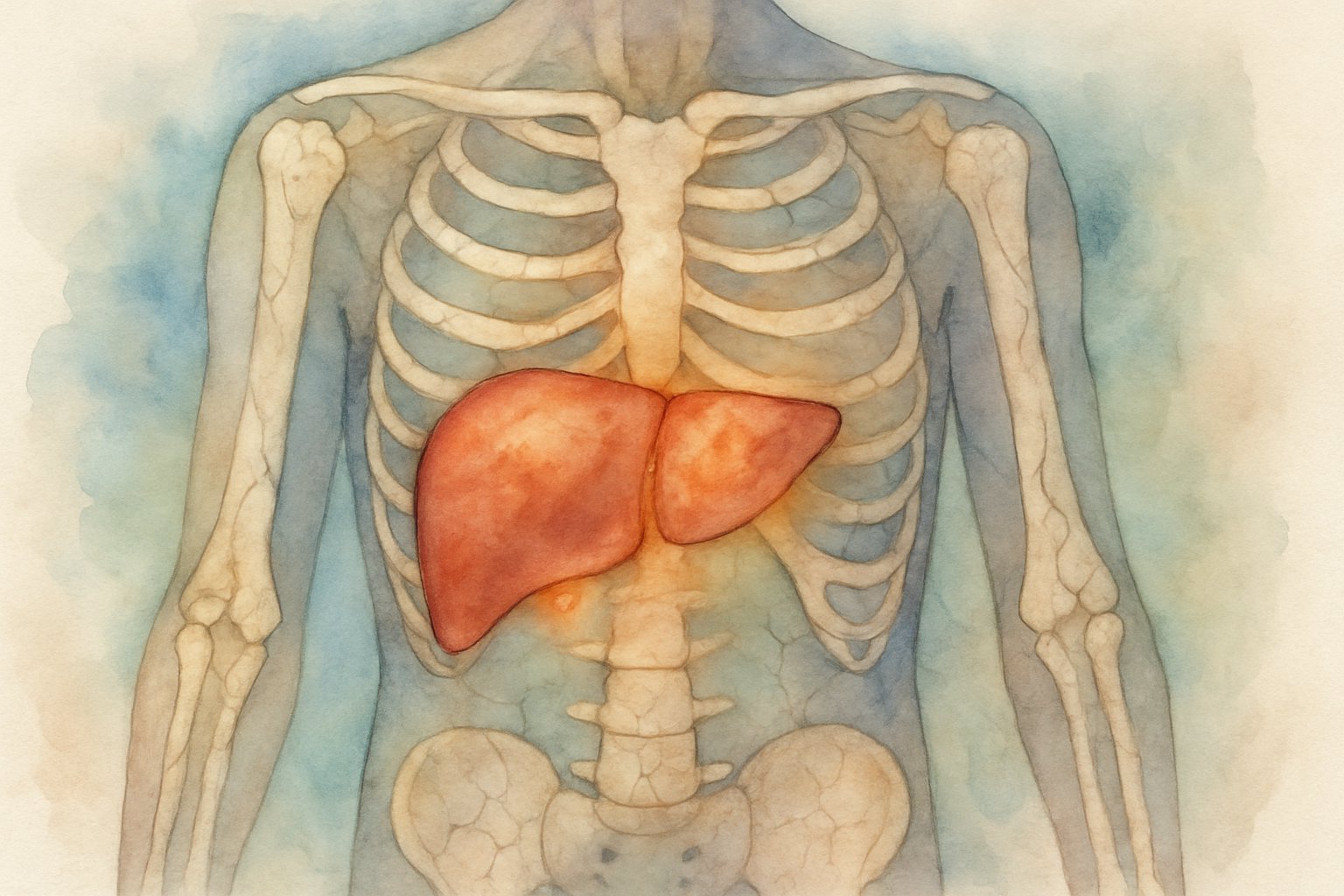
High ALP levels can signal liver disease, bone disorders, or other health problems that need medical attention. Your body uses this enzyme to break down proteins and help with digestion. Normal levels keep your body working well, but when they get too high, it can cause serious health issues.
Understanding what happens when your ALP levels rise helps you recognize warning signs early. High levels don’t always cause symptoms right away, but they can point to conditions that affect how your liver processes toxins or how your bones stay strong.
Key Takeaways
- High ALP levels usually indicate liver disease or bone disorders that require medical evaluation
- Elevated alkaline phosphatase can occur without symptoms but may signal serious underlying health conditions
- Doctors use ALP blood tests along with other tests to diagnose and monitor liver and bone health problems
What Is ALP and Why Is It Important?
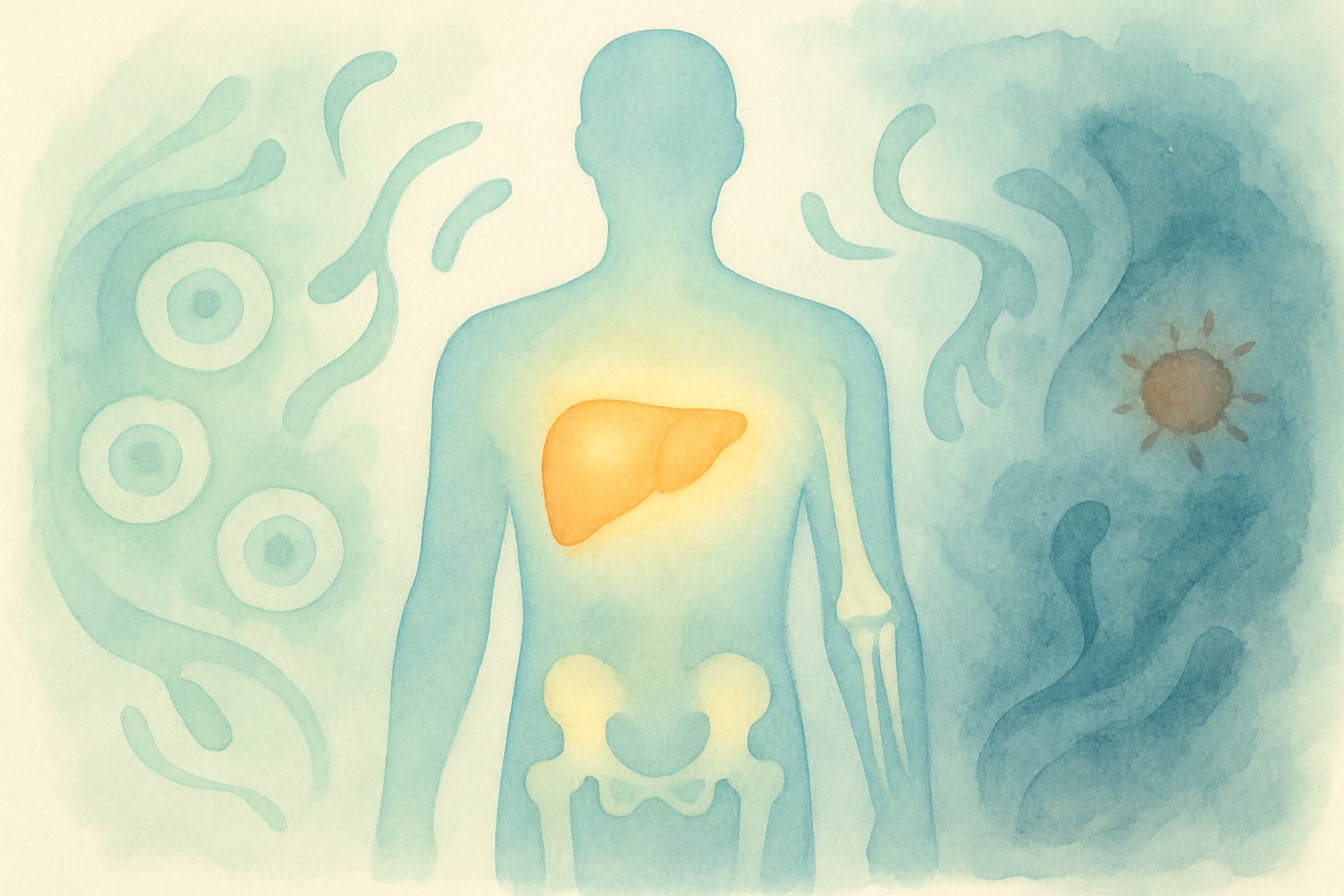
ALP is an enzyme that speeds up chemical reactions throughout the body and plays essential roles in bone formation, liver function, and cellular processes. The body produces this enzyme in multiple organs, with each location serving specific metabolic functions.
The Role of Alkaline Phosphatase in the Body
Alkaline phosphatase acts as a catalyst[1] that allows important bodily processes to happen. This enzyme speeds up chemical reactions that would otherwise occur too slowly to support normal body functions.
The enzyme works by removing phosphate groups from various molecules. This process is called dephosphorylation and is crucial for many cellular activities.
ALP helps transport nutrients across cell membranes. It also assists in breaking down proteins and other large molecules into smaller, usable parts.
The enzyme plays a key role in bone mineralization. It helps deposit calcium and phosphate into bone tissue, making bones strong and healthy.
Where ALP Is Found
ALP is found throughout the body with significant concentrations in the liver, bones, kidneys, and bile ducts[2]. The liver contains the highest amounts of this enzyme in adults.
Bone tissue produces large quantities of ALP, especially during periods of bone growth and repair. Growing children typically have higher bone ALP levels than adults.
The kidneys and intestines also contain notable amounts of this enzyme. The intestines use ALP for various digestive processes[3].
The placenta produces ALP during pregnancy. Pregnant women often show elevated ALP levels, particularly in the third trimester.
Other locations include the bile ducts, lungs, and certain white blood cells.
Functions of the ALP Enzyme
ALP supports bone health by helping form new bone tissue. The enzyme enables the proper deposition of minerals that make bones dense and strong.
In the liver, ALP helps process nutrients and remove waste products. It assists in bile production and helps the liver filter toxins from the blood.
The enzyme aids in vitamin D metabolism. This function is important for calcium absorption and overall bone health.
ALP helps maintain proper cell membrane function. It regulates what substances can enter and exit cells throughout the body.
During growth periods, ALP levels naturally increase to support rapid bone development. This is why children and teenagers typically have higher ALP levels than adults.
What Constitutes High ALP Levels?

Understanding what makes ALP levels high requires knowing the normal ranges and how laboratories measure these values. Blood tests use specific units and standards to determine when ALP levels move beyond healthy limits.
Normal ALP Ranges
Normal ALP levels vary based on age, sex, and individual factors. Adults typically have ALP levels between 44 and 147 international units per liter (IU/L) in their blood.
Children and teenagers often show higher normal ranges. Their growing bones produce more ALP naturally. This makes their normal levels range from 100 to 390 IU/L.
Pregnant women also have elevated normal ranges. The placenta produces additional ALP during pregnancy. Their levels can reach 200 IU/L and still be considered normal.
Age-Based Normal Ranges:
- Adults: 44-147 IU/L
- Children/Teens: 100-390 IU/L
- Pregnant women: Up to 200 IU/L
When Is ALP Considered High?
High ALP levels[1] occur when blood test results exceed the upper limit of normal ranges for a person’s age group. For most adults, levels above 147 IU/L indicate elevated ALP.
The degree of elevation matters for diagnosis. Mildly high levels range from 150-200 IU/L. Moderately high levels fall between 200-400 IU/L.
Severely elevated levels exceed 400 IU/L. These often signal serious liver or bone conditions that need immediate medical attention.
High ALP Categories:
- Mild: 150-200 IU/L
- Moderate: 200-400 IU/L
- Severe: Above 400 IU/L
Measuring ALP: Blood Tests and Laboratory Standards
ALP blood tests[3] measure enzyme activity in international units per liter. Laboratories use standardized methods to ensure accurate results across different testing facilities.
The blood test requires a simple blood draw from a vein. No special preparation is usually needed. Results typically become available within 24-48 hours.
Different laboratories may have slightly different reference ranges. This happens because of variations in testing equipment and methods. Doctors always compare results to their specific laboratory’s normal ranges.
Testing Process:
- Blood sample collection
- Laboratory analysis using standardized methods
- Results reported in IU/L
- Comparison to lab-specific reference ranges
Causes of High ALP in the Body
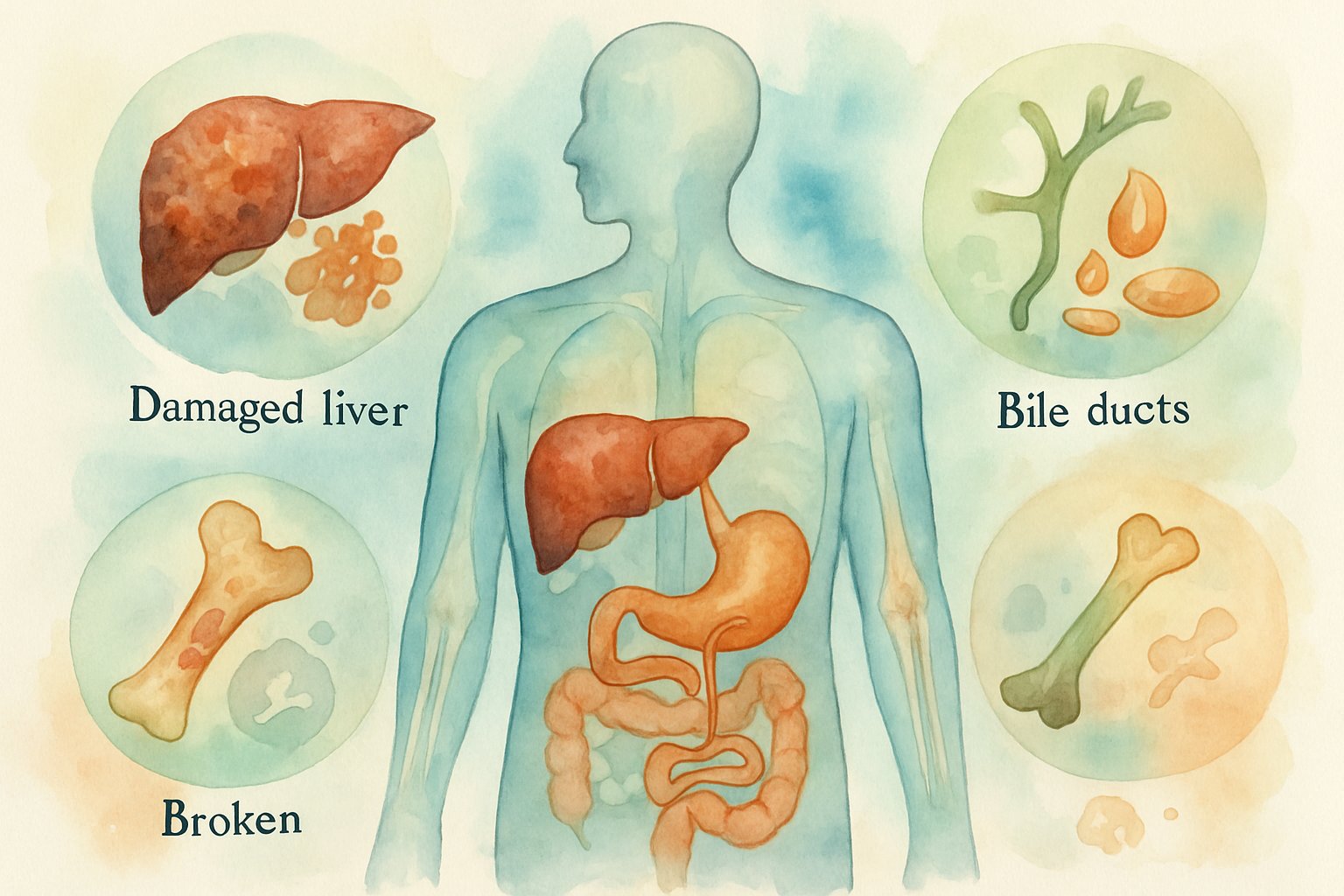
Several medical conditions can cause alkaline phosphatase levels to rise above normal ranges. The most common causes include liver problems, bone diseases, certain cancers, and natural body changes during pregnancy.
Liver Disease and Bile Duct Obstruction
Liver conditions are among the most frequent causes of elevated ALP levels[1]. When the liver becomes damaged or inflamed, it releases more ALP into the bloodstream.
Common liver-related causes include:
- Hepatitis (viral or alcohol-induced)
- Cirrhosis
- Fatty liver disease
- Primary biliary cholangitis
Bile duct obstruction creates another major source of high ALP. When bile ducts become blocked, pressure builds up in the liver. This causes liver cells to produce and release excess ALP.
Gallstones represent the most common cause of bile duct obstruction. Tumors, scar tissue, or infections can also block these important pathways. Primary biliary cholangitis specifically targets the small bile ducts inside the liver, causing chronic inflammation and elevated ALP levels.
Bone Disorders and Growth
Bone tissue naturally contains high amounts of ALP. Any condition that increases bone activity will raise ALP levels in the blood. This includes both bone formation and bone breakdown processes.
Key bone disorders that elevate ALP:
- Paget’s disease: Causes rapid bone turnover
- Osteomalacia: Softening of bones due to vitamin D deficiency
- Bone fractures: Healing process increases ALP production
- Bone infections: Inflammation stimulates ALP release
Children and teenagers normally have higher ALP levels than adults. This occurs because their bones are still growing rapidly. The growth process requires constant bone remodeling, which naturally increases ALP production.
Adults experiencing bone growth spurts or healing from fractures will also show temporary ALP elevation. The level typically returns to normal once bone activity decreases.
Cancer and Malignancies
Certain cancers can significantly raise ALP levels through different mechanisms. Liver cancer directly damages liver tissue and increases ALP production. Other cancers may spread to the liver or bones.
Cancer types commonly associated with high ALP:
- Liver cancer (primary or metastatic)
- Bone cancer
- Breast cancer with bone metastasis
- Prostate cancer with bone spread
- Lung cancer with liver involvement
Bone metastasis from various cancers creates particularly high ALP levels. Cancer cells in bone tissue stimulate both bone destruction and formation. This dual process dramatically increases ALP production beyond normal ranges.
Some cancers produce ALP directly, even without liver or bone involvement. These tumors can create ALP levels that appear similar to liver or bone disease.
Pregnancy and Other Physiological Factors
Pregnancy naturally increases ALP levels, especially during the third trimester. The placenta produces its own form of ALP, which enters the mother’s bloodstream. This elevation is completely normal and expected.
Other physiological factors include:
- Age: Older adults often have slightly higher baseline levels
- Growth periods: Adolescents show natural elevation
- Healing processes: Any tissue repair can increase ALP
Certain medications can also raise ALP levels. Antibiotics, pain medications, and some supplements may cause temporary increases. These changes usually reverse once the medication is stopped.
Some people have naturally higher ALP levels without any underlying disease. Family history and genetic factors can influence baseline ALP production throughout life.
Symptoms and Health Consequences of High ALP
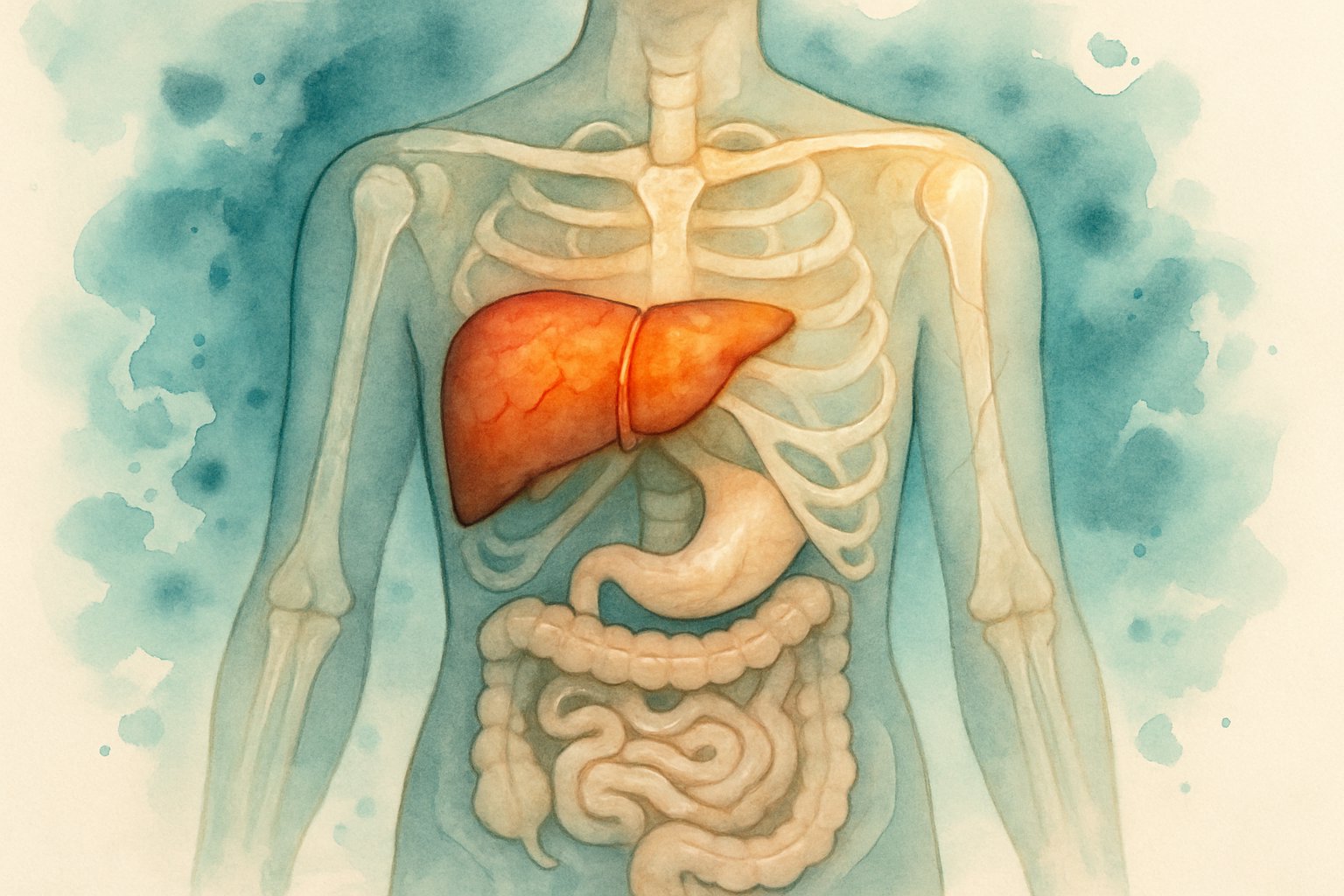
High alkaline phosphatase levels often produce subtle symptoms that can affect multiple body systems. The most noticeable effects typically involve the liver and bones, where this enzyme is most concentrated.
General Symptoms to Watch For
Most people with elevated ALP experience fatigue and weakness as primary symptoms. These feelings often develop gradually and may worsen over time.
Nausea and vomiting are common early warning signs. These digestive symptoms can occur even when ALP levels are only slightly elevated.
Loss of appetite frequently accompanies high alkaline phosphatase. This can lead to unintended weight loss over several weeks or months.
Many individuals report feeling generally unwell without being able to identify specific symptoms. This vague discomfort often prompts people to seek medical attention.
Swelling in the legs or abdomen may develop as ALP levels continue to rise. This symptom typically indicates more serious underlying conditions.
Liver-Related Complications
High alkaline phosphatase levels may indicate liver disease[1] and can signal significant liver damage. Jaundice is one of the most visible signs of liver problems.
Jaundice causes yellowing of the skin and eyes. This happens when the liver cannot process waste products effectively.
Liver inflammation often produces pain in the upper right side of the abdomen. This discomfort may worsen after eating fatty foods.
Dark urine and pale stools are warning signs of liver complications. These changes in color indicate problems with bile production and processing.
Severe liver involvement can cause confusion or difficulty concentrating. These mental changes require immediate medical attention.
Bone-Related Effects
Certain bone disorders can cause elevated ALP levels[1] and create painful symptoms. Bone pain is often the first sign patients notice.
The pain typically affects the back, hips, and legs. It may worsen with movement or weight-bearing activities.
Fractures can occur more easily when ALP levels remain high for extended periods. These breaks often happen with minimal trauma or stress.
Bone disease associated with high ALP can cause deformities in severe cases. The bones may become softer and more prone to bending.
Joint stiffness and arthritis-like symptoms may develop. This inflammation can limit mobility and cause daily discomfort.
Other Associated Symptoms
Headaches occur frequently in people with elevated alkaline phosphatase levels. These may be mild at first but can become more severe over time.
Muscle cramps and spasms are common complaints. These symptoms often affect the legs and may worsen at night.
Sleep disturbances can result from pain and general discomfort. Poor sleep quality often makes fatigue and weakness worse.
Some people develop skin problems like itching or rashes. These symptoms may indicate underlying liver or kidney involvement.
Shortness of breath during normal activities can signal advanced complications. This symptom requires prompt medical evaluation and treatment.
How Doctors Diagnose the Cause of High ALP

When ALP levels come back elevated, doctors use specific blood tests and diagnostic methods to find the root cause. The key is determining whether the high ALP comes from liver problems or bone disorders.
The ALP Test and Related Laboratory Assessments
The ALP blood test measures enzyme levels[1] that come from the liver and bones. Doctors typically order this test as part of a comprehensive metabolic panel during routine checkups or when symptoms suggest liver or bone problems.
Most labs run the ALP test alongside other important markers. These include ALT and AST, which specifically measure liver cell damage.
Common tests ordered with ALP:
- ALT (alanine aminotransferase)
- AST (aspartate aminotransferase)
- Total bilirubin
- Albumin
- Calcium and phosphorus levels
The metabolic panel gives doctors a complete picture of how well different organs work. This broader view helps them spot patterns that point to specific conditions.
Interpreting ALP Results with Other Markers
Doctors measure γ-glutamyltransferase to unveil liver or skeletal origin[4] when ALP levels are high. GGT levels help determine where the excess ALP comes from.
If GGT is also high: The problem likely comes from the liver or bile ducts. This pattern suggests hepatitis, bile duct blockage, or liver disease.
If GGT stays normal: The high ALP probably comes from bones. This points to bone disorders like Paget’s disease or bone tumors.
Liver function tests work as a group to show different types of liver problems. ALT and AST rise when liver cells get damaged. Bilirubin increases when bile flow gets blocked.
The combination of normal or low ALT/AST with high ALP often means bile duct problems rather than liver cell damage.
ALP Isoenzyme Test and Specialized Diagnostics
When basic liver function tests don’t clearly show the cause, doctors order an ALP isoenzyme test. This specialized test separates different forms of ALP[4] to pinpoint their origin.
Types of ALP the test identifies:
- Liver ALP (from liver tissue)
- Bone ALP (from bone cells)
- Intestinal ALP (from intestines)
- Placental ALP (during pregnancy)
The isoenzyme test uses electrophoresis to separate these different forms. This method shows doctors exactly which tissues are producing excess ALP.
Bone ALP immunoassays provide more precise measurements for bone-related conditions. These tests work better for monitoring bone diseases and treatment responses.
When doctors order isoenzyme testing:
- ALP stays high but GGT results are unclear
- Multiple conditions might be present
- Treatment monitoring requires precise measurements
- Rare conditions need investigation
Managing and Treating High ALP Levels

Treatment focuses on identifying and treating the root cause rather than the elevated enzyme levels themselves. Regular monitoring and lifestyle changes can support the body’s natural healing process.
Addressing Underlying Conditions
The most effective approach targets the specific condition causing elevated ALP levels. Doctors typically order additional tests to pinpoint whether the elevation stems from liver disease, bone disorders, or other medical issues.
For liver-related causes, treatment may include medications to reduce inflammation or manage underlying conditions like hepatitis. Patients with gallbladder problems might need procedures to remove blockages or stones.
Bone-related ALP elevations often require different interventions. Doctors may prescribe medications to strengthen bones or treat conditions like Paget’s disease. Some patients need hormone therapy or supplements to address bone metabolism issues.
Certain medications can cause temporary ALP increases. Healthcare providers may adjust dosages or switch to alternative treatments when possible. Stopping problematic medications often allows levels to return to normal ranges.
Common underlying conditions requiring treatment:
- Liver diseases (hepatitis, cirrhosis, fatty liver)
- Bone disorders (Paget’s disease, osteomalacia)
- Gallbladder blockages
- Thyroid disorders
- Kidney disease
Monitoring and Follow-Up Testing
Regular blood tests track ALP levels over time to ensure treatments are working effectively. Most doctors recommend retesting within 4-6 weeks after starting treatment.
Follow-up testing helps distinguish between different types of ALP in the blood. Doctors may order specific tests to separate liver ALP from bone ALP. This information guides more targeted treatment approaches.
Patients with persistently high levels need more frequent monitoring. Some conditions require monthly blood draws until levels stabilize. Others may need testing every 3-6 months once treatment begins showing results.
Additional tests often accompany ALP monitoring. These may include liver function panels, bone markers, or imaging studies. The combination provides a complete picture of treatment progress.
Typical monitoring schedule:
- Initial follow-up: 4-6 weeks
- Stable patients: Every 3-6 months
- Complex cases: Monthly until controlled
Lifestyle and Nutritional Considerations
Diet plays a supporting role in managing conditions that cause high ALP levels. A balanced diet rich in essential nutrients supports both liver health and bone metabolism.
Zinc deficiency can affect ALP production and bone health. Foods high in zinc include oysters, beef, pumpkin seeds, and chickpeas. Some patients may need zinc supplements under medical supervision.
Vitamin D deficiency often contributes to bone-related ALP elevations. Regular sun exposure and foods like fatty fish, egg yolks, and fortified dairy products help maintain adequate levels. Many patients require vitamin D supplements.
Malnutrition can worsen underlying conditions causing high ALP. Protein-rich foods support liver function and bone repair. Calcium and magnesium are essential for proper bone metabolism.
Key nutritional factors:
- Zinc: Supports enzyme function and bone health
- Vitamin D: Essential for calcium absorption
- Protein: Needed for tissue repair
- Calcium: Critical for bone metabolism
Avoiding alcohol reduces stress on the liver in patients with liver-related ALP elevations. Maintaining a healthy weight also supports both liver and bone health.
Special Considerations and Less Common Causes
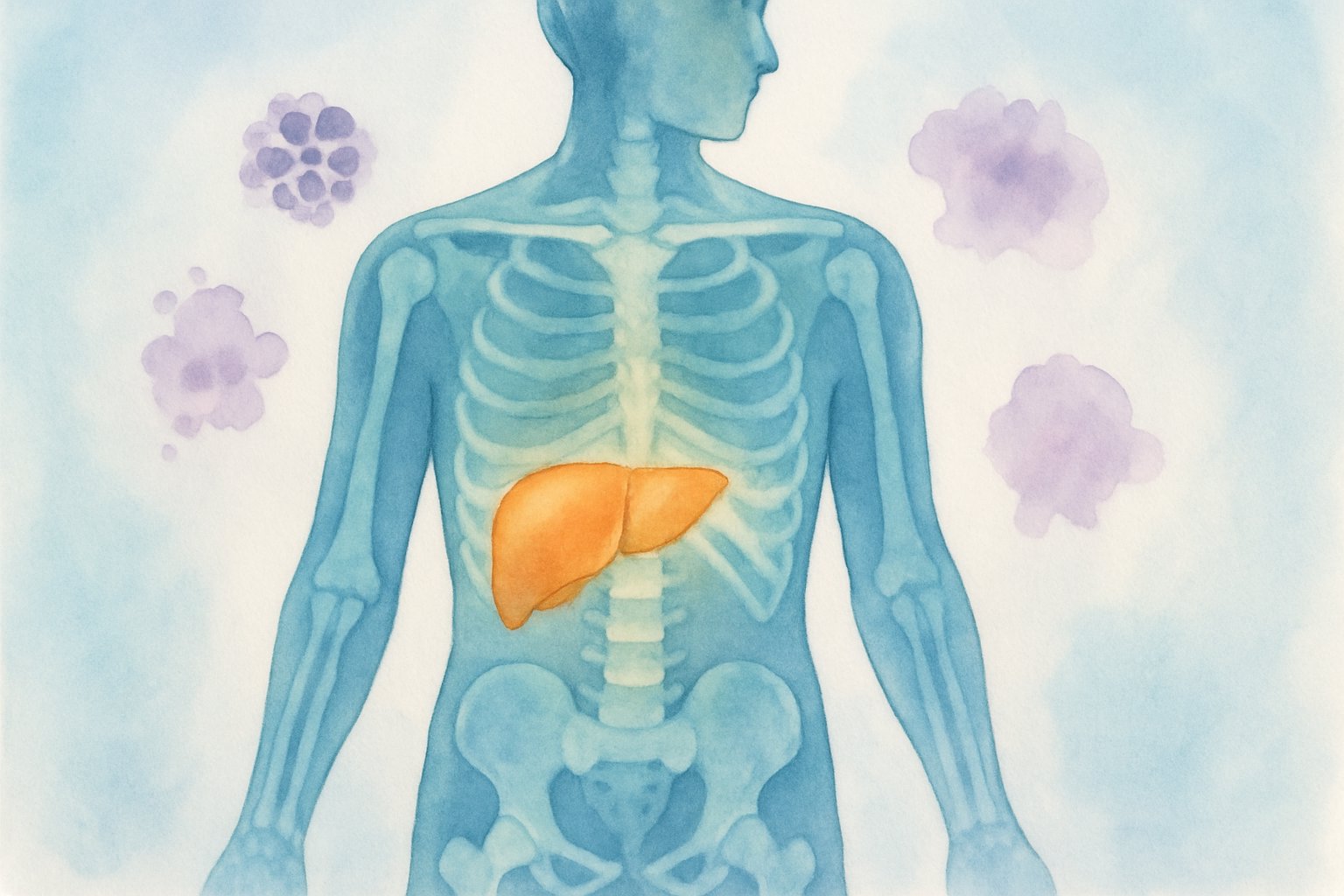
Certain age groups and medical conditions can cause elevated ALP levels[1] through mechanisms different from typical liver or bone disease. Endocrine disorders and rare genetic conditions also create unique patterns of ALP changes that require specialized evaluation.
Pediatric and Adolescent ALP Elevations
Children and teenagers naturally have much higher ALP levels than adults. This happens because their bones grow rapidly during development.
Normal ALP ranges for kids can be 2-4 times higher than adult levels. The highest levels occur during growth spurts in puberty.
Doctors must use age-specific reference ranges when checking children’s blood tests. What looks dangerously high for an adult may be completely normal for a 14-year-old.
Common pediatric causes include:
- Active bone growth during puberty
- Healing fractures
- Vitamin D deficiency rickets
- Childhood liver conditions
Parents should not worry if their child has elevated ALP during growth periods. The levels typically return to adult ranges once growth stops in the late teens.
ALP Changes in Endocrine Disorders
Hormone imbalances can significantly affect ALP production. The thyroid and parathyroid glands have the strongest impact on these enzyme levels.
Hyperthyroidism causes ALP to rise because excess thyroid hormone speeds up bone turnover. Patients may experience rapid heartbeat and weight loss alongside elevated blood tests.
Hypothyroidism can also raise ALP levels. The sluggish metabolism affects how the liver processes this enzyme.
Hyperparathyroidism dramatically increases bone ALP. Too much parathyroid hormone pulls calcium from bones, causing them to release large amounts of the enzyme.
These conditions require hormone testing beyond basic ALP measurements. Treatment focuses on correcting the underlying hormone imbalance rather than the elevated enzyme itself.
Genetic and Rare Conditions
Several uncommon diseases create distinct ALP patterns that help doctors make specific diagnoses.
Hypophosphatasia is a rare genetic disorder where ALP levels are abnormally low instead of high. This condition causes weak bones and dental problems from birth.
Infections can temporarily raise ALP levels. Mononucleosis commonly affects liver function in teenagers and young adults. The enzyme levels usually return to normal once the infection clears.
Pernicious anemia sometimes elevates ALP through its effects on cell production. This vitamin B12 deficiency condition requires specific blood tests to diagnose properly.
Other rare causes include certain cancers spreading to bones and inherited liver diseases. These conditions often have additional symptoms that help doctors identify the underlying problem.
Frequently Asked Questions
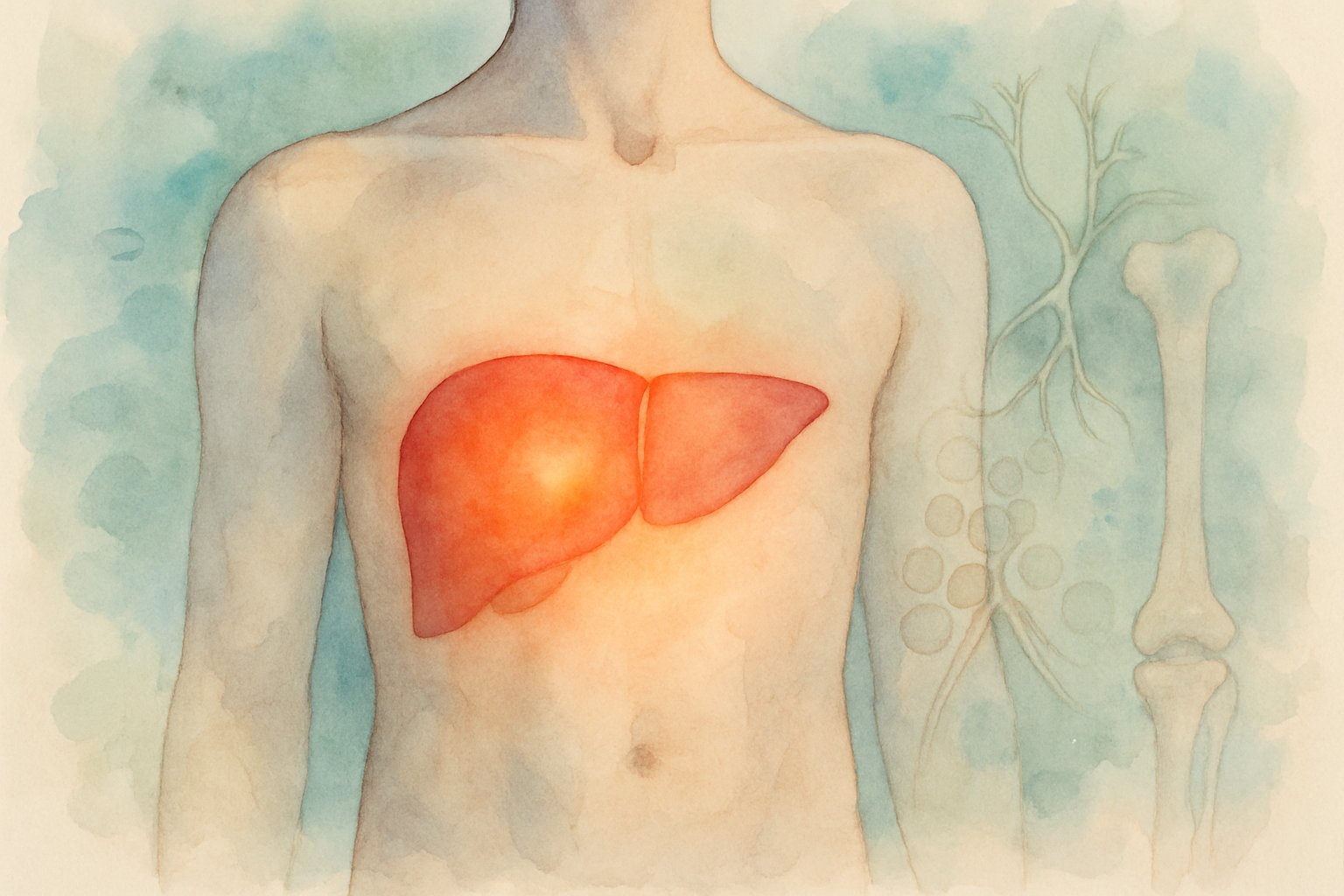
High alkaline phosphatase levels can indicate liver disease, bone disorders, or other health conditions that require medical attention. Understanding the symptoms, risks, and treatment options helps people make informed decisions about their health.
What are the potential health risks of elevated alkaline phosphatase levels?
High levels of ALP in blood may indicate liver disease or certain bone disorders[1]. These conditions can progress and cause serious health problems if left untreated.
Liver damage is one of the main risks when ALP levels stay high. The liver may not filter toxins properly or make important proteins the body needs.
Bone problems can also develop when ALP levels remain elevated. This includes conditions like Paget’s disease, which causes bones to become weak and deformed.
Elevated ALP levels may signal tissue damage and changes in normal bodily processes[5]. Early detection helps prevent complications.
How can high alkaline phosphatase levels be managed or treated?
Treatment depends on what is causing the high ALP levels. Doctors need to find the root cause before starting any treatment plan.
For liver-related causes, patients may need to avoid alcohol and certain medications. They might also need treatments for hepatitis or other liver conditions.
Bone-related causes may require medications that help regulate bone formation. Vitamin D and calcium supplements are sometimes recommended.
Regular blood tests help doctors monitor ALP levels over time. This shows whether treatments are working effectively.
Which dietary changes are recommended for someone with high alkaline phosphatase?
People with high ALP should limit alcohol consumption since it can damage the liver. Avoiding processed foods and excess sugar also helps reduce liver stress.
A diet rich in fruits and vegetables provides antioxidants that support liver health. Lean proteins like fish and chicken are better choices than red meat.
Foods high in vitamin D and calcium support bone health when ALP elevation relates to bone disorders. This includes dairy products, leafy greens, and fortified foods.
Staying hydrated helps the liver and kidneys function properly. Drinking plenty of water throughout the day is important.
What symptoms might indicate a person has high levels of alkaline phosphatase?
Many people with high ALP levels do not have obvious symptoms. Blood tests often reveal the problem during routine checkups.
When symptoms do occur, they usually relate to the underlying condition. Liver problems may cause yellowing of the skin or eyes, fatigue, and abdominal pain.
Bone-related symptoms include bone pain, joint stiffness, and increased risk of fractures. Some people notice their bones feel tender to touch.
General symptoms like nausea, loss of appetite, and unexplained weight loss can also occur. These symptoms warrant medical evaluation.
Why are women more likely to have high alkaline phosphatase levels, and what does it mean?
Women have higher ALP levels during pregnancy because the placenta produces this enzyme. This is normal and usually returns to baseline after delivery.
Postmenopausal women may have elevated ALP due to increased bone turnover. Lower estrogen levels after menopause can affect bone metabolism.
Women also have higher rates of certain autoimmune liver diseases. Conditions like primary biliary cholangitis are more common in women and can raise ALP levels.
Age-related bone changes in women can also contribute to higher ALP levels. This is especially true for women with osteoporosis or other bone disorders.
Could elevated alkaline phosphatase be an indicator of cancer?
Yes, some cancers can cause high ALP levels. Liver cancer and cancers that spread to the liver often increase this enzyme.
Bone cancers or cancers that spread to bones can also raise ALP levels. This happens because cancer cells disrupt normal bone processes.
However, high blood levels usually point to liver or bone problems[6] that are not cancer-related. Most cases of elevated ALP have benign causes.
Doctors use additional tests to determine if cancer is present. These may include imaging scans, other blood markers, and sometimes tissue biopsies.
References
- Alkaline Phosphatase (ALP): What It Is, Causes & Treatment. https://my.clevelandclinic.org/health/diagnostics/22029-alkaline-phosphatase-alp Accessed October 27, 2025
- The Shocking Truth About High Alkaline Phosphatase and Its Effects on Your Body. https://www.consumersearch.com/health-beauty/shocking-truth-high-alkaline-phosphatase-effects-body Accessed October 27, 2025
- The intestines use ALP for various digestive processes. https://www.health.com/alkaline-phosphatase-7556288 Accessed October 27, 2025
- Just a moment.... https://www.mayoclinicproceedings.org/article/S0025-6196(24)00611-6/fulltext Accessed October 27, 2025
- High Alkaline Phosphatase: Causes, Symptoms, and Management. https://www.rupahealth.com/post/high-alkaline-phosphatase-causes-symptoms-and-management Accessed October 27, 2025
- High Alkaline Phosphatase Symptoms & How to Reduce It. https://labs.selfdecode.com/blog/alkaline-phosphatase/ Accessed October 27, 2025
